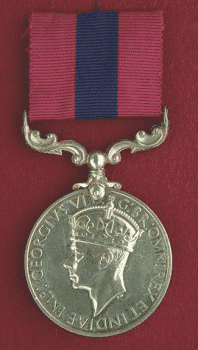 This decoration was instituted by Queen Victoria "For Distinguished Conduct in the Field" by soldiers in the Crimean War,
on the recommendation of the Commander-in-Chief in the field. The DCM for non-commissioned officers and men was sanctioned in 1854 to replace the old "Meritorious Service Medal" for gallantry in action. Recipients may use the letters DCM after their name and bars may be awarded for further actions of courage.
This decoration was instituted by Queen Victoria "For Distinguished Conduct in the Field" by soldiers in the Crimean War,
on the recommendation of the Commander-in-Chief in the field. The DCM for non-commissioned officers and men was sanctioned in 1854 to replace the old "Meritorious Service Medal" for gallantry in action. Recipients may use the letters DCM after their name and bars may be awarded for further actions of courage.The medal was made of silver and the obverse originally bore a trophy of arms, as on the Long Service Medal of Victoria's reign, but those awarded during the reigns of King Edward and King George display the Royal effigy. The reverse shows the words "For/Distinguished/Conduct/in the Field" in four lines, with a horizontal line through a small oval wreath below the wording. The ribbon is striped red, blue and red, in three equal widths.